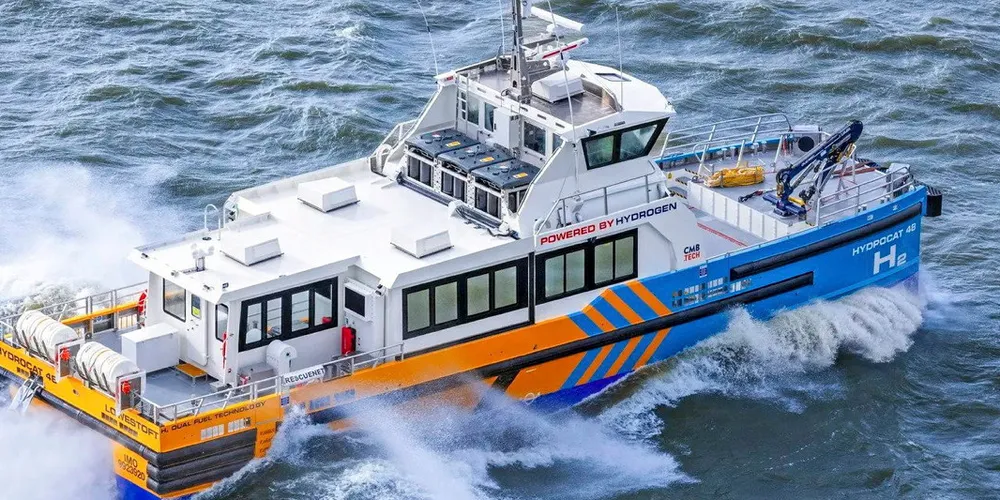Pilot boat | 'World first' as Vestas pins hopes on green hydrogen to slash emissions by a third
Wind giant to use grey hydrogen for trial of H2-powered crew transfer vessel, but aims to use the scheme to ‘mature a pathway’ to green

Vestas is planning to go carbon neutral by 2030 without the use of offsets. With offshore operations accounting for a third of its scope 1 and 2 emissions, hydrogen could present an opportunity to decarbonise this segment without loss of power, the company said.
And green hydrogen made from renewable energy will not play a role at all: the CTV, set to be launched by Vestas in collaboration with Windcat Workboats next week to run until the end of 2022, will use grey hydrogen made from natural gas.
The scheme is expected to deliver carbon savings of 37% against a traditional vessel during the pilot project, the turbine manufacturer said.
As a result, green hydrogen could have a significant role to play if the company finds that it is an effective way to power its shipping fleet.
“Hard to abate sectors, such as shipping, will be the final frontier in our global journey towards decarbonisation,” said Christian Venderby, Vestas’ executive vice-president of service. “Hydrogen is a crucial technology to advance this journey, which is why Vestas is eager to test its potential to reduce emissions from our service operations.”
Nevertheless, Vestas may have calculated that the capital cost of converting its whole shipping fleet to electric motors outweighs the costs of switching to dual-fuel and gradually phasing in hydrogen, or only using it some of the time. This last approach could open up the company to accusations of greenwashing, especially given the high carbon content of MGO.
“By using dual-fuel combustion engines, we can make hydrogen technology operational in the industry and kick-start further development of the technology, regulation [and] supply chain,” said Willem van der Wel, managing director of Windcat Workboats.
“Collaborations like these are what is needed to be able to scale this technology further and we thank Vestas for taking this first step.”
(Copyright)